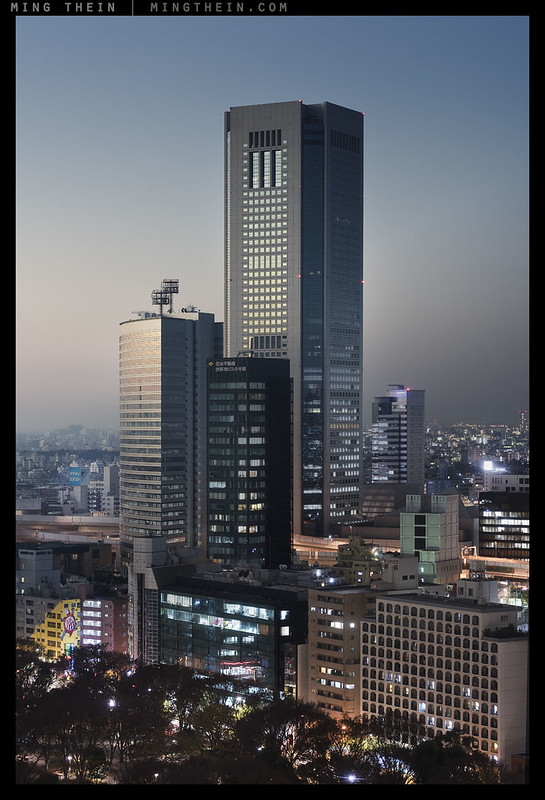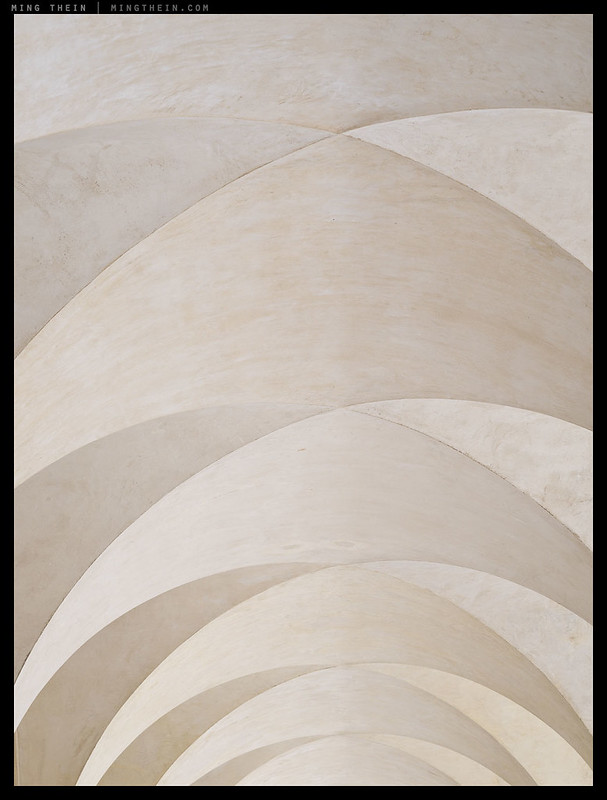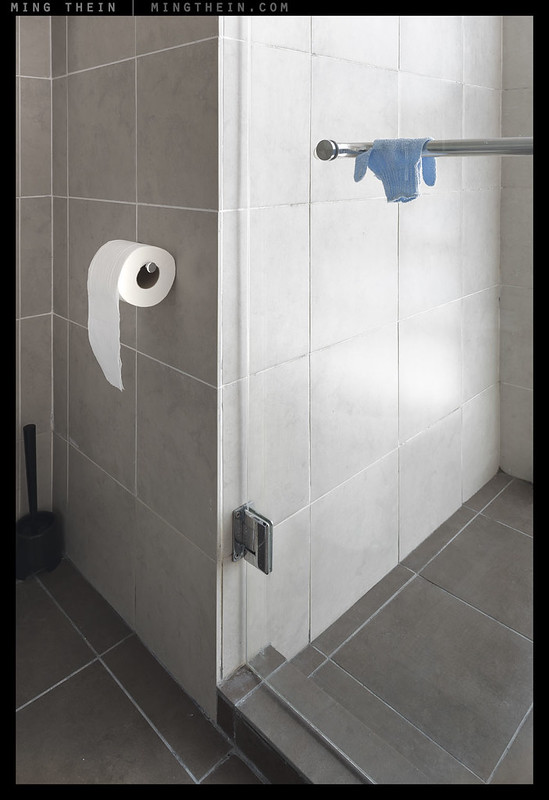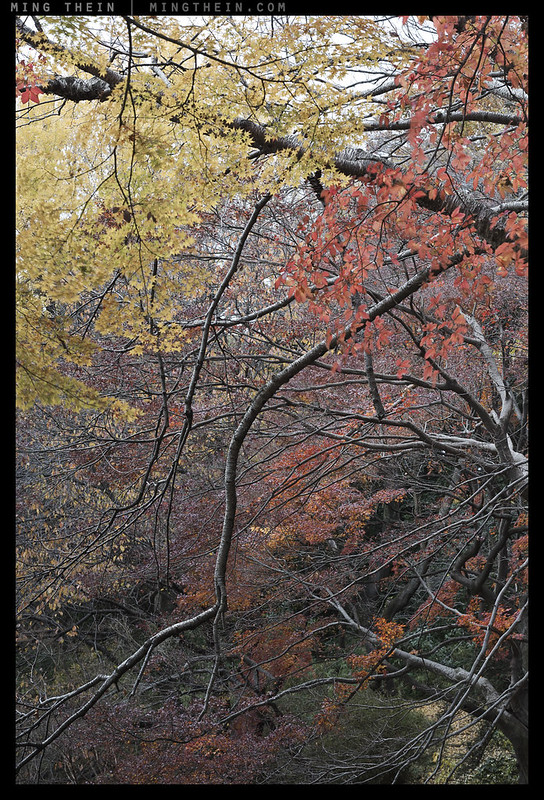
Portrait of a building – time does not have to be an instant; perhaps the best side of a subject has to be a composite
I have previously written about various personal approaches to photography – manifestoes or beliefs or aspirations or aims if you will. I’ve written about why we photograph and the relationship between images, the artist and the audience. But I don’t think I’ve ever really written about the endgame.

Everyman – or falling prey to familiar habits
There are a lot of possible interpretations here: shooting one subject or camera or one location until you die, or get fed up of photography; quitting entirely; or aiming for the near-impossible (like say, international celebrity) and never quite getting there. I don’t think any of these is realistic or inspiring enough to keep you going, frankly. I’d much rather look at it as a question of where you want to be photographically in five, ten, twenty years’ time. What kind of images would you like to produce? What kinds of subjects would you like to be able to regularly shoot? The answers to all of these things may not be well define, but that’s no problem. If there is no goal, then there can be no progress because you have no idea where you are going.

Painterly I – what makes a photograph appear to us as being a photograph?
It’s always going to start with a necessary amount of imitations: the easiest way to set a photographic target is by first defining what you like and dislike: and you’re only going to be able to answer this if you see a sufficiently wide range of images and styles. If you haven’t seen anything you like, it might just be possible that you haven’t been looking hard enough – or you already know where you want to go. The next step is executing the imitation: it’s not because you don’t want to make better images than that; it’s because what is really important here is the control and understanding gained from the execution. Once you can produce what you envision, then it’s time to work on the envisioning.

Arches – order in abstraction in extremis
There is no point in trying to make a facsimile of another person’s style or work your own endgame: not only is that person’s work probably also continually evolving, but the more you attempt to imitate – the closer you get to verisimilitude – the more little differences are going to start feeling jarring. No two people are the same; photographs are a reflection of our own biases and preferences, and therefore no two photographs are going to be the same, either. You diverge to your own course, and perhaps find another photographer to follow. The cycle repeats. The more times the cycle repeats, the more integration happens rather than imitation. Previous elements of style and presentation get layered on new ones. The creative process is really not a completely blank-state innovative one, but rather one built on a sort of collective evolution.

Bathroom I – there is beauty waiting to be found in the everyday
You are now at the final stage of creative evolution. You have the executional chops, you have an idea before you even think about translating it into an image, and now the challenge becomes making every image and idea a unique one. It is very easy – sometimes too easy, too comfortable – to slip into previous ‘automatic’ behaviours; you see something, you compose, expose and process it a certain way to give it a certain ‘signature’. Avoiding the temptation to make photographs you’ve made before (whether with the same subject or not, same location or not, or merely the same idea but with no improvements) is one of the most difficult things for any serious artist to avoid. In effect, it’s self plagiarisation to an extent; you really can be your own worst enemy.
I personally know I have to fight the temptation to make the same kind of images again and again; it’s not always easy to avoid this because there’s obviously something about the results from the previous time that worked – they proved attractive to you and your audience. Experimentation is needed; a challenge is sometimes necessary to force that. The challenge might be a new location, a new subject, a new piece of equipment – or more likely, a new restriction. Restrictions force us to get creative to work around them, and hopefully find something new to add to the visual toolkit in the process.

Wheel shadow – light is at the core of every photograph; but what about images/scenes/subjects that are really nothing without a very specific quality of light?
Experimentation is risky, though: it’s an experiment precisely because we don’t know what the outcome will be, and this might prove to be a waste of time or disappointing. You may well come away with few keepers and the slightly resentful feeling that you probably should have stuck to the tried and true – especially if the opportunity was a fleeting or limited one. I try to avoid that, not just because inevitably you’ll land up playing it safe for some images out of instinct anyway; but also because the experimental images that do work are going to give you something new, and be far more satisfying. Rather than be disheartened, it’s important to be as objective as possible to figure out exactly what went wrong, why, and be open to any serendipitous lines of experimentation to investigate further.
It’s easy to talk about experimentation, endgames, restrictions and creative development in a very abstract way. In practical terms, it means that you do need to go into a given photographic situation with a fairly specific objective. Condition yourself mentally as to what to look for to satisfy the objectives; but at the same time, it does help to keep an open mind since other opportunities may arise. Equip yourself appropriately hardware-wise – there’s no point in bringing lenses or cameras ‘just in case; the temptation to fall back to shooting what’s safe is far too high, especially if the objective isn’t yielding results. Forcing yourself to work with a very restricted or unfamiliar toolkit is sometimes not a bad thing, especially if you are a person who can ‘see’ a lot.

Autumn in Tokyo III – the idea of transparency is one that I think I’m now comfortable with. Oddly, the next evolution seems to be into Asian landscape paintings: not to the point of minimalism or oversimplification/stylization, but seeing this vertical, ‘cascading’ flow in a scene.
Personally, I could be very happy 99% of the time with say a 24-70/2.8 zoom; it’s flexible enough to have a wide range of perspectives, fast enough to work in marginal light, and of sufficient quality. But I don’t own one, because it feels to me like too much of a creative compromise. I’d rather shoot with manual focus primes that force me to slow down, or tilt-shift lenses that force me to think about perspectives and focal planes, or single focal length that forces me to previsualize. I have no doubt my hit rate would be higher if I went with the 24-70/2.8 over say a 24/3.5 PCE and 1.4/55 Otus; but I’d be making a large number of ~3 images*, but no or few 4s. I’d much rather have a lower overall yield with the latter two lenses, let some ‘safe’ shots go, and have a solid number of 4s than a large number of 3s. Falling back to the ‘safe option’ Swiss Army Knife can be relaxing and good to just develop one’s instinctive seeing, but real creative advances are only going to be enabled by breaking out the obsidian scalpels.
*See The Four Things for an explanation of the rating/curation logic.
Most of the time, I do just that. I have only one situation in which the 24-120/4 VR comes out (the closest thing I have to a 24-70; VR is more useful to me in obtaining optimal image quality than the faster aperture since I work stopped down most of the time anyway): when there’s a job at stake and the client hasn’t wanted or given any room for any experimentation. Producing a result as expected is then a matter of professionalism and craftsmanship. I’m often tempted to also default to the same during workshops and masterclasses because I fear that my participants want to see some effortless images as per their expectations; however I usually get sensible towards the end and remember that the purpose here is really to be creative, and that learning what doesn’t work from failed experiments is equally important.

Stitch error – this should have been Forest VII; Photoshop thought otherwise. An unexpected but surprisingly interesting result; much like when you fire a Hasselblad CFV digital back again before it’s had time to completely read out and save the file…the question is, how can one use something fundamentally unpredictable to create consistent images and ideas other than by repetition and tight curation? Is that still photography?
It’s one of the reasons I’ve been refocusing my own personal hardware lately: I have some specific objectives, always overlaid by the desire to make physical, printed output. Only in the printed image can you see all of the captured information at once, and truly be able to assess whether an image works or not. I also want to have as high a degree of transparency and control over perspective and focal plane as possible; this means chasing ultimate image quality in the form of apochromatic lenses like the Zeiss Otuses, Voigtlander APO-Lanthars and tilt-shift PCEs on – for now – still a D810 body. It’s also why you’re not seeing much cinematic or conventional reportage work from me these days – it doesn’t speak to me as much as it used to or follow my creative intentions, and as a result, I’m seeing but consciously bypassing those opportunities, and usually not carrying the appropriate hardware for it. (Of course, you can shoot anything with anything, but it seems silly to deliberately use a tool that is not just unconventional but really not suited for the job – like a PCE.)
I don’t rule out either the objectives (and by extension, the hardware) changing; it has done so heavily in the last five years and will undoubtedly continue to do so. Five years ago, I couldn’t have seen myself making the images I do now – and by the same token, I look at my work from five years ago and cringe a little at the overall compositional and idea ‘looseness’ and lack of finishing refinement. But at the same time, I realise that this is the result of a little malcontent and the need to always push; it’s a process of experiments tried, failed and new creative avenues explored. I could not shoot what I shoot now without having produced what came before. I certainly hope I won’t settle, and I can say the same thing in another five, ten, twenty years. The images in this post are all chosen to deliberately represent a certain avenue of experimentation I’m exploring now; the concepts/principles are not fully matured, but I can see the germ of something there. My own endgame is very simple. I’ve often been asked what my favourite or ‘best’ image is: it always has to be the next one. MT
__________________
The Lisbon Masterclass (9-14 Mar 2016) is now open for booking
__________________
Ultraprints from this series are available on request here
__________________
Visit the Teaching Store to up your photographic game – including workshop and Photoshop Workflow videos and the customized Email School of Photography. You can also support the site by purchasing from B&H and Amazon – thanks!
We are also on Facebook and there is a curated reader Flickr pool.
Images and content copyright Ming Thein | mingthein.com 2012 onwards. All rights reserved





“Five years ago, I couldn’t have seen myself making the images I do now”
Can I just say that before I found this site, and particularly your educational materials, I thought it would take me a very long time to get to the point where I could make images that were of the caliber acceptable to my own eyes. I am a huge perfectionist, so perhaps I was drawn here because of the constant perfectionism that pervades your thinking and work.
Do I still struggle with making images consistently? Yes. Will that change as I keep learning and working at it? Yes. Do I have a fairly well-defined framework for which to make progress? HUGE YES.
How lucky am I that I now think, “Five years from now, I can see myself making the images I want.” But also *already* thinking, “Where do I go from there?”
Thanks Kenny! I actually think the more images we make, the harder it becomes to make one we’re happy with: the bar gets higher and we know we can do better. It’s great because it means the potential is unlimited, but it’s also scary because it means we don’t shoot as much anymore etc.
I’ll start with a reverse though: have a concept or an idea, and just shoot towards it. See where your intuitive interpretation goes, be systematic about figuring out what’s missing and then go from there. 🙂
I’ll make note to think through that, as well as review that idea once in a while. Thanks for the insight. 🙂
“Bathroom I” is a hum-dinger. So formal, so breathtakingly beautiful. And the best picture I have yet seen with a roll of toilet tissue in it. 😉 Of course, many images are posted (a few even printed!) with lowly and common subject matter. That is its own cliche now. But you seem able to dance above any cliche you encounter. Like the supreme athlete who pulls the winning performance from somewhere, just at the point of near failure. One question is whether viewers today have much appetite left for tasteful, deft aesthetics. Pictorialism (think early Steichen, Stieglitz) and f/64 Straight Photography (Adams, Weston, Cunningham and others) have lingered, but are no longer embraced as currently relevant. At least not by the Art Industrial Establishment. 😉 Perhaps the appealing essence of “Bathroom I” is the timeless and inevitably perfect feeling it provokes…
Thanks – I think Abosch’s recent $1m Potato takes the cake for common subject matter…though perhaps it’s time I experiments with some toilet rolls 😛
Bathroom I for me was more of the warping of reality/time when you’re either sitting on the can or lost in a hot shower at the end of a long day…or perhaps it’s just the physicist in me seeing space-time representation lines in the tiles…
Thanks so much for writing this post – it confirmed a few things I believed and gave me some new ideas as well. It reminds of something Eric Clapton once said about learning to play the guitar. I think I read about it in his autobiography. He said he started by listening to a lot of music he liked, then trying to play in that style (blues, I think), then outright stealing guitar licks and playing those. He got to the point where he could play just like those he loved. But it was only then when he had a full grasp of playing in that style that he was able to then evolve and play in his own style. I’ve had a few times where a photograph of mine was of “pro-level” quality that I’d expect to see on a magazine cover. Only then could I realize what it took to get that photo and how I could introduce my own spin on it. Anyway, thanks again for this.
I coach told me once “wait till you know what your doing, before trying to add style points”.
What he says makes sense – you have to understand why you like something and how to reproduce it before you can go on to translate your own imagination 🙂
Great article Ming, as usual. I’d love to attend one of your workshops one day.
Thanks!
I was going to comment on your previous post (Saul and Edward) how I really enjoyed the evolution from simplistic ‘idea of man’ concept (silhouettes and out-of-focus figures) to something more refined (almost fully transparent yet still abstracted to an idea), but I guess the thought fits here, too. The photos in this post are fine examples of other visual developments, which only became apparent after reading the full text.
Regarding the creative stages, I believe there’s one more. What you’re describing with the first four is essentially the evolution of visual presentation and personal style. In what I’d describe as the fifth stage the photographer has a higher purpose beyond pleasing audience with cool photos or developing visual signature as a stand-alone achievement. Whether the purpose is to conserve African wildlife or to preserve memories for family, technical and artistic skills become subordinate to it, just like in the earlier stages technique becomes subordinate to presenting ideas and the photographer’s own vision. With external motivation driving the process, personal style needs to bend and probably redefines itself. I believe this is how the best photographers ultimately find their style: by working for a cause, not by trying to perfect the visuals (including storytelling and presentation of ideas) in isolation. I think there are many analogies in other professions; it’s not by accident that passion is so often sought after. Perhaps, though, the very best commercial photographers have a passion just for that: selling things with their photographs.
Actually, the final curation of Idea of Man retained only the more metaphorical images that fit the overall story – Saul and Edward I felt were a bit more ambiguous; that can mean depth of it can mean confusion. I think further experimentation is required 🙂
The fifth stage – we do it because we have to, not in a slavery sort of way, but one of underlying personal drive. I don’t think you can hit stage four without that though – you’re not going to bother with the nth degree required to develop something new.
One can be a very successful commercial photographer without knowing much about photography – sales ability and connections are really all that’s required most of the time…in fact, I’d argue that’s far more important than actual artistic ability.
Don’t you ever have uses for photography that work against your personal drive? For example if you feel that a certain personal project would be good to accomplish, but it would require a sudden change of direction in art or execution; basically, the goals working like a client who won’t give you the artistic freedom you’d like? Or do you follow the instinct to produce certain kind of images and then figure out what to use your personal work for? I find the process interesting because, as others have already pointed out, there are similarities to other areas in life, and also other works of art (novel writing is a fascinating process even if I’d never attempt it).
True about sales and connections, but I was referring to those with best images for commercial use, not the ones with highest revenue.
No, I can’t actually say that I’ve encountered that problem…usually, you only tend to imagine in line with your own personal drive (i.e. your imagination 🙂
As for sales and connections and best images: the best images seldom make it out if you can’t sell them, and basically a case of: ‘we’ll never know’.
It’s so interesting to read about your process Ming. I think the honesty and straight out heartfelt description on how you have been thinking, feeling and struggling with and against, is making this status very readworthy. It can be hard to comment on anything specific because on some level some of us perhaps have had the same thoughts to some extend without really realizing what those thoughts meant.
I feel it very difficult to judge oneself, but perhaps this read has opened up some doors for new and welcome awareness of what is going on in the daily trivialities? I actually think so 🙂
Thanks Gerner. It’s the whole photography as philosophy argument again: we need to know why we’re doing what we’re dong in order to capture it right, and in order to know why we’re doing it, we need to understand ourselves…
I love “stitch error”. One of the best pictures I have seen recently. I think you can still take the credit for unpredictable happenings if you experiment enough.
I have to say it doesn’t feel fully deliberate because I had no control over the final process…but I suppose the computer can’t make a portrait out of tree segments…
Thanks for your words man, they are needed and appreciated.
No problem.
Ming, so much of what you write – in this and other blogs – can be more broadly applied to many creative endeavours. I’ve spent my life in science and have constantly refused to settle. Life has been one long intellectual journey – frustrating at times, but so very stimulating. Trouble is many disciplines find it hard to pigeonhole people who constantly move forward; life is more personally rewarding and challenging, but can be less professionally rewarded. So many of my colleagues dig ever deeper holes and seek the 4th decimal place… Do keep up the good work – yours is one of only a few blogs I read regularly. Now semi-retired I have more time for photography. My challenge is composition…. but that, as you say, is all part of the growing. Thanks for the stimulating reading and the beauty in the art.
You’re right there: most of the time, we do it for the intellectual challenge and the personal satisfaction more than anything else. If we don’t have that internal validation, what else is left?
Not much is left if one has “burn out”. I burned out of scientific research when I became too physically exhausted on a chronic basis, and was dealing with elderly parents with medical issues and Alzheimer’s. Photography is an attempt to get a sense of play back in my life. I like trying something new without consequences affecting other people. It’s no big deal if I fail, someone isn’t going to lose a job.
I might if I do, though. And I think it changes the whole underlying psychology of why I shoot, I think.
I really love Forest 6.5. It’s kind of like seeing how your Hasselblad digital back really thinks. But it’s also a very compelling composition.
Thanks! As for the Hasselblad…I regret not experimenting more with that glitch before I sold it…
Ming,
You know this link is broken? Is it a test? Did I pass? 😉
Michael
Sent from Windows Mail
Yes, it’s dead. WordPress malfunction. Not supposed to be posted today.
Hi – this will not load. Thanks
Best,
Michael
Michael Pennello Photography
757 652 4296
MichaelPennello.wordpress.com
>
Not intended to be posted today. WordPress error.
What happened to this? link broken, not on home page.
Werner Gansz
WordPress error. Not supposed to be posted yet.
Not around, error 404. Please repost.
Not intended to be posted today, wordpress error.